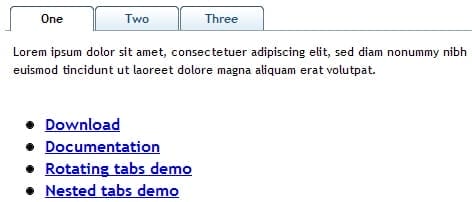Inbound Marketing Search Engine Optimization: Driving Traffic and Conversion in 2024

In the realm of digital marketing, the adage ‘the early bird catches the worm’ remains valid. As marketers, our main objectives are to attract users and enhance conversion rates. However, what are the effective strategies for achieving these main objectives using methods concentrated on inbound marketing and search engine optimization?
This article explores the symbiotic relationship between inbound marketing and SEO, and how combining these two strategies can lead to remarkable outcomes.
From understanding the basics to measuring performance, we will uncover the secrets to driving traffic and conversion in the ever-evolving digital landscape. Ready to unlock the potential of inbound marketing and SEO? Let’s dive in!
Key Takeaways
- Inbound marketing focuses on creating valuable and relevant content to attract customers.
- SEO optimizes content to improve visibility on search engines.
- Targeting keywords aligns content with audience needs and interests.
- Measuring and analyzing performance helps identify areas for improvement.
Understanding the Basics of Inbound Marketing and Search Engine Optimization

Increasingly vital digital visibility relies on inbound marketing to attract customers through valuable content while SEO expands reach. Inbound builds trust and leadership through relevant, high-quality customer-focused content.
Inbound marketing search engine optimization then optimizes discoverability by elevating search engine rankings so more connections convert. Combined, inbound strategies create awareness while SEO drives visibility and traffic to captivated audiences.
These synergistic approaches cemented credibility via thought leadership content promoted widely to searchers. Blending organic discovery and conversion not only grows revenue but also cements sector positioning.
Conducting Keyword Research for Inbound Marketing and SEO

Keyword research plays a crucial role in optimizing website content for effective inbound marketing and SEO. By identifying the specific words and phrases our target audience uses to search for information related to our products or services, we can create content that aligns with their needs and interests.
Google Keyword Planner, SEMrush, and Moz are popular tools for keyword research. They provide insights into search volume and competition for specific keywords, helping us prioritize which keywords to target in our content creation efforts.
It’s also essential to consider long-tail keywords. While they may have lower search volume, they are more specific, have less competition, and often result in higher conversion rates.
Optimizing Website Content for Search Engines and Inbound Marketing

After conducting thorough keyword research, the next step is implementing on-page optimization techniques and creating high-quality, relevant content that incorporates keywords naturally.
On-page optimization techniques include optimizing meta tags, headings, URLs, and images to improve search engine rankings. Creating high-quality, relevant content is also crucial for both SEO and inbound marketing strategies.
Content that provides useful information to the audience not only attracts attention but also increases the chances of being shared and linked to by other websites.
Leveraging Content Marketing for Inbound Marketing Search Engine Optimization Success

Developing a content marketing strategy that aligns with your SEO goals is crucial for inbound SEO success. Content marketing focuses on creating valuable and shareable content to attract organic traffic.
Promoting this content through various channels, such as social media and email marketing, can increase visibility and drive traffic.
Inbound marketing and SEO work hand in hand to create a cycle of success. Aligning your content marketing strategy with your SEO goals can improve search engine rankings, enhance brand credibility, and attract a larger audience.
How Does Keyword Research Affect Inbound Marketing and SEO in 2024?
In 2024, mastering keyword research will continue to be crucial for inbound marketing and SEO success. Understanding the exact phrases and terms your target audience is searching for will drive traffic to your site and improve your search engine ranking. Knowing how to master keyword research will be essential in staying ahead in the digital landscape.
Measuring and Analyzing Inbound Marketing and SEO Performance

Utilizing key metrics and tools to measure and analyze the performance of inbound marketing and SEO allows for the optimization and refinement of strategies for maximum success.
Key ways to measure performance include:
- Website Traffic: Tracking the number of visitors to gauge the effectiveness of marketing efforts which proves effectiveness of inbound marketing search engine optimization.
- Conversion Rates: Measuring the percentage of visitors who take a desired action to identify areas for improvement.
- Engagement Metrics: Analyzing metrics such as time spent on page, bounce rate, and click-through rates, to gauge the effectiveness of content.
Conclusion
In conclusion, incorporating inbound marketing and SEO into our strategies is essential for driving traffic and increasing conversions. By optimizing content and leveraging SEO techniques, we can reach a larger audience and enhance brand credibility.
The synergy between these two approaches is undeniable. In today’s competitive digital landscape, it’s crucial to combine these powerful tools to achieve maximum results with inbound marketing search engine optimization.
Frequently Asked Questions
What is inbound marketing and how does it work?
Inbound marketing is a marketing methodology that focuses on attracting customers through valuable content and interactions. It involves creating and sharing content designed to appeal to your target audience, which helps to attract qualified prospects and build trust and credibility for your business.
How does SEO work in inbound marketing?
Inbound marketing search engine optimization plays a crucial role in inbound marketing. It involves optimizing your website and content to rank higher in search engine results, driving more organic traffic to your site, and increasing the visibility of your brand.
How can inbound marketing help in driving traffic and conversion?
Inbound marketing attracts visitors to your website through valuable content, engaging social media marketing, and effective SEO strategies.
By providing relevant and helpful information, it generates leads and nurtures them through the buyer’s journey, ultimately leading to conversion.
How does inbound marketing and SEO work together?
Inbound marketing search engine optimization works together to ensure that your content is not only valuable and engaging but also visible to potential customers.
By optimizing your content for search engines and focusing on providing valuable information, you can attract more organic traffic and improve your conversion rates.
How can inbound marketing and SEO help in delighting customers?
By providing valuable and relevant content, and ensuring that it is easily discoverable through inbound marketing search engine optimization, you can delight customers by addressing their needs and concerns. This helps in building trust and establishing long-term relationships with your audience.






